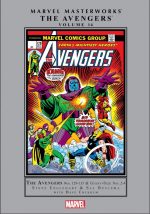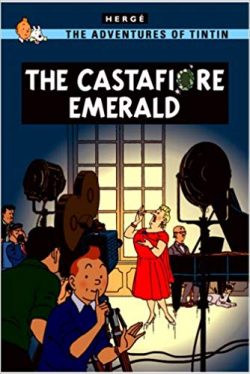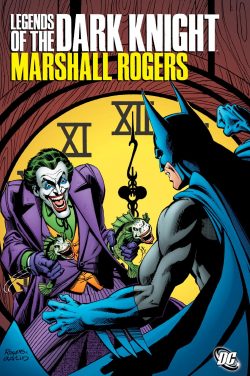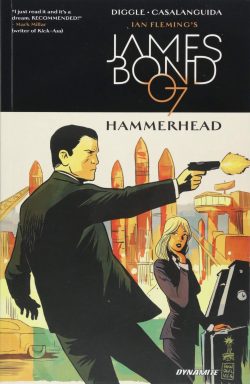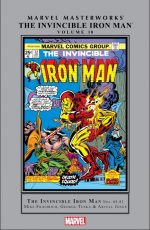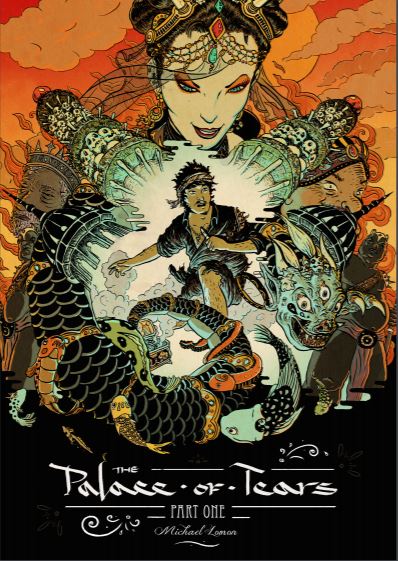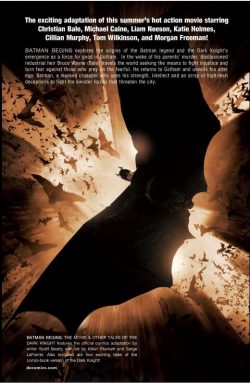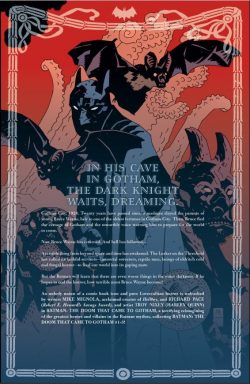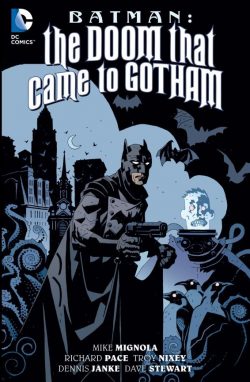

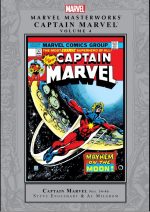
By Steve Englehart, Mike Friedrich, Chris Claremont, Jim Starlin, Alfredo Alcala, Al Milgrom & various (Marvel)
ISBN: 978-0-7851-5877-6 (HB)
Win’s Christmas Gift Recommendation: Maximum Marvel Mayhem… 8/10
In 1968, upstart Marvel was in the ascendant. Their sales were rapidly overtaking industry leaders National/DC and Gold Key Comics and, having secured a new distributor which would allow them to expand their list of titles exponentially, the company was about to undertake a creative expansion of unparalleled proportions.
Once each individual star of “twin-books†Tales of Suspense, Tales to Astonish and Strange Tales was awarded their own title, the House of Ideas just kept on going. In progress was a publishing plan which sought to take conceptual possession of the word “Marvel†through both reprint series like Marvel Tales, Marvel Collector’s Items Classics and Marvel Super-Heroes. Eventually, showcase titles such as Marvel Premiere, Marvel Spotlight and Marvel Feature also proudly trumpeted the name, so another dead-cert idea was to publish an actual hero named for the company – and preferably one with some ready-made cachet and pedigree as well.
After the infamous DC/Fawcett copyright court case of the 1940s-1950s, the prestigious designation Captain Marveldisappeared from newsstands. In 1967, during the “Camp†craze superhero boom generated by the Batman TV series, publisher MLF secured rights to the name and produced a number of giant-sized comics featuring an intelligent robot able to divide his body into segments and shoot lasers from his eyes.
Quirky, charming and devised by the legendary Carl Burgos (creator of the Golden Age Human Torch), the series nevertheless failed to attract a large following in that flamboyantly flooded marketplace and on its demise the name was quickly snapped up by Marvel Comics Group.
Marvel Super-Heroes was a brand new title: it had been reconfigured from double-sized reprint title Fantasy Masterpieces, which comprised vintage monster-mystery tales and Golden Age Timely Comics classics, but with the twelfth issue it added a showcase section for characters without homes such as Medusa, Ka-Zar, Black Knight and Doctor Doom, plus new concepts like Guardians of the Galaxy and Phantom Eagle to try out in all-new stories.
To start the ball rolling, the title headlined an alien spy sent to Earth from the Kree Galaxy. He held a Captain’s rank and his name was Mar-Vell.
After two appearances, Captain Marvel catapulted straight into his own title and began a rather hit-and-miss career, battling spies, aliens, costumed cut-ups such as Sub-Mariner, Mad Thinker and Iron Man. Most frequently, however, he clashed with elements of his own rapaciously colonialist race – such as imperial investigative powerhouse Ronan the Accuser – all the while slowly switching allegiances from the militaristic Kree to the noble, freedom-loving denizens of Earth.
Disguised as NASA scientist Walter Lawson, he infiltrated a US missile base and grew closer to security chief Carol Danvers, gradually going native even as he was constantly scrutinised by his ominously orbiting commanding officer Colonel Yon-Rogg – Mar-Vell’s ruthless rival for the love of the teeming starship’s medical officer Una…
The impossible situation came to a head when Mar-Vell gave his life to save the empire from overthrow from within. As a reward, vast, immortal hive-mind the Supreme Intelligence inextricably bonded the expiring warrior with voice-of-a-generation and professional side-kick Rick Jones who – just like Billy Batson (the naïve lad who turned into the original Fawcett Captain Marvel by shouting “Shazam!â€) – switched places with a mighty adult hero whenever danger loomed.
By striking a pair of ancient, wrist worn “Nega-bands†together they could temporarily trade atoms: one active in our universe whilst the other floated, a ghostly untouchable, ineffectual voyeur to events glimpsed from the ghastly anti-matter Negative Zone.
The Captain was an alien lost on Earth, a defector from the militaristic Kree who fought for humanity three hours at a time, atomically chained to Rick by mysterious wristbands which enabled them to share the same space in our universe, but whenever one was active here the other was trapped in a terrifying isolated antimatter hell…
The book was cancelled soon after that… only to return some more!
A series which would not die, Captain Marvel returned again in the summer of 1972 for another shot at stardom and intellectual property rights security and secured its place when Jim Starlin used the title to wage a cosmic war with his greatest creation: the Mad Titan Thanos.
This fourth stellar Masterworks compilation (available in luxurious hardback and far-ranging eBook formats and spanning September 1972 to September 1976 whilst gathering Captain Marvel #34-46) details what happens after the ultimate villain was defeated and seemingly killed.
It is preceded by an Introduction by incoming scripter Steve Englehart who – with co-plotter and illustrator Al Milgrom – charted an even more cosmic course for the Good Captain…
With the universe saved and restored, Starlin’s run ended on a relatively minor note in Captain Marvel #34 as ‘Blown Away!’ – plotted by Jim, inked by Jack Abel and dialogued by Englehart – explored the day after doomsday.
As Rick tries to revive his on-again, off-again musical career, newly extant secret cabal the Lunatic Legion despatches Nitro, the Exploding Man to acquire a canister of nerve gas from an Air Force base where Carol Danvers is Chief of Security…
Although the Protector of the Universe defeats Nitro, he succumbs to the deadly toxin which escapes its canister in the explosive melee. From this exposure he would eventually contract the cancer that killed him – as depicted in Marvel’s first Graphic Novel, The Death of Captain Marvel – but that’s a tale for a different review…
Issue #35 finds Mar-Vell all but lifeless in ‘Deadly Genesis’ (Englehart, dialoguer Mike Friedrich & artist Alfredo Alcala). Simultaneously, Rick languishes in the Negative Zone where he is attacked by insectoid monster Annihilus …until a barely-remembered 3-hour time-limit automatically switches his body with the comatose Kree hero.
Later, as Rick’s manager Mordecai Boggs drives him to a gig, Rick’s consciousness slips into the N-Zone and animates Mar-Vell’s unresponsive body to escape Annihilus, and the lad realises this new power is merely one tactic in a cunning plan devised by the duplicitous, devious Supreme Intelligence…
Meanwhile on Earth, Rick’s vacated body has been taken to hospital where old friends Ant-Man and the Wasp are fortuitously visiting when the Living Laser attacks. The villain has been artificially augmented by his new masters, but it’s not enough to stop the retired Avengers or prevent Rick reclaiming his body and using the Nega-bands to restore his bonded soul mate to their particular brand of normality…
At this time, deadline difficulties caught up with the title and #36 was reduced to running a reprint of his origin from Marvel Super-Heroes #12. This Essential edition only includes the foreboding 3-page bookend ‘Watching and Waiting’ by Englehart, Starlin, Alan Weiss & friends, before the saga properly relaunches in #37 with ‘Lift-Off!’ from Englehart, Milgrom & Klaus Janson.
Although Mar-Vell easily discerns that the Lunatic Legion’s attacks stem from the Moon, Rick insists on playing a gig before they set off. After bidding farewell to Mordecai and his sometime stage partner Dandy, they wisely prepare for their trip by outfitting the boy with an advanced spacesuit…
Mar-Vell blasts off but only makes it as far as the outer atmosphere before being attacked by another Lunatic agent. Cyborg Nimrod is no match for Kree firepower, however, and in the Neg-Zone implacable Annihilus endures a painful defeat when he again assaults Rick who joyously revels in the sheer power packed into his EVA gear…
Crisis averted, the bored, naive kid swallows a “vitamin†Dandy slipped him before departure and is transported on a trip unlike any he’s ever experienced. Tragically, as Mar-Vell reaches the air-filled lost city in the “Blue Area of the Moon†he too begins to experience bizarre hallucinations and is utterly unable to defend himself when the all-powerful Watcher ambushes him…
The austere, aloof cosmic voyeur Uatu is part of an ancient, impossibly powerful race of immortal beings who observe all that occurs throughout the vast multiverse but never act on any of it. Non-interference is their fanatical doctrine, but Uatu has continually bent – if not broken – the adamantine rule ever since he debuted in Fantastic Four #13…
Now, somehow, the Legion have co-opted the legendarily neutral astral witness. Once Uatu defeats Mar-Vell, the demi-god despondently dumps his victim with the Lunatic Legion who are exposed as rebel, supremacist Kree plotting to overthrow the Supremor. Fundamentalists of the original race which assimilated the millions of other species, the colonially aggressive and racially purist Blue Kree plan to execute their captive who seemingly has ‘…No Way Out!’, but are unprepared for the closer psychic link which the hallucinations have forged between Earth kid and Kree captain…
With the insurgents defeated, Mar-Vell and Rick follow the repentant Uatu as he returns to his own distant world in #39 to voluntarily undergo ‘The Trial of the Watcher’…
In the aftermath of that mind-bendingly bizarre proceeding, Rick and Mar-Vell are finally liberated from their comic bond. With both now independently existing in the positive-matter universe and able to return and leave the Negative Zone at will, their troubles seem over. They couldn’t be more wrong…
CM #40 shifts focus as ‘Rocky Mountain ‘Bye!’ (inked by Al McWilliams) reveals how the space-farers return to an Earth which has no real use for them. As Mar-Vell battles a deadly beast possessing the corpse of his first love Una, Rick finds his music career and even his beliefs are considered irrelevant and of no value. Equally heart-sore and dispirited, the former cellmates reunite and decide to travel to the stars together…
The first stop is Hala, capital of the Kree Empire and Mar-Vell’s birthworld as #41 reveals ‘Havoc on Homeworld!’ (Englehart, Milgrom, Bernie Wrightson, P. Craig Russell, Bob McLeod & Terry Austin) with the populace suddenly swept up in a race war against “Pinks†(human flesh-toned Kree mulattos like our hero).
Determined to warn the Supremor of the conflict and the schemes of the Lunatic Legion, the heroes are appalled to learn the strife has been actively instigated by the colossal mind-collective…
It transpires that, from his earliest moments in military service, Mar-Vell has been groomed by the Supremor to be its ultimate foe. As the ruthless amalgamation of military minds seeks to jump-start the development of the evolutionarily-stalled Kree, it desperately needs an enemy to contend against and grow strong…
Distracting his baffled, betrayed opponents with Ronan the Accuser, the Supreme Intelligence places one Nega-band on Rick and another on Mar-Vell and casually banishes them to the farthest reaches of the empire…
Issue #42 sees them deposited in an insane pastiche of Earth’s wild west mining towns and quickly embroiled in interstellar claim-jumping and a ‘Shoot-Out at the O.K. Space Station!’ (inks by Frank Giacoia & Mike Esposito). As the Kree with a star on his chest lays down the law and has a showdown with the cosmically-charged Stranger, close by Drax the Destroyer is ravaging worlds and planetoids, slowly going insane for lack of purpose. Rick goes his own way and is almost fatally distracted by a beautiful girl nobody else can see…
Drax was created to kill Thanos, but since the Titan’s defeat – by someone else – the devastating construct has wandered the universe, slowly going crazy.
CM #43 shows how – unaware that Thanos still lives – the purposeless nemesis takes the opportunity to assuage his frustrations by attacking the hero who stole his glory in ‘Destroy! Destroy!’ (Englehart & Milgrom).
The epic clash ends in #44 as ‘Death Throws!’ sees the pointless conflict escalate until Rick’s imaginary friend intervenes and opens the Destroyer’s eyes…
With sanity restored all round, Mar-Vell then voyages to a Kree colony world ravaged by cyborgs and life-absorbing Null-Trons and discovers Supremor has been subtly acting to merge him and Rick into one puissant being to further his evolutionary agenda in ‘The Bi-Centennial!’
Forewarned, and with a small band of most unlikely allies, the cosmic conflict then wraps up in blockbusting fashion as Rick and Mar-Vell unite by not combining to defeat the Supremor in a battle ‘Only One Can Win!’ (scripted by Chris Claremont, and limned by Milgrom & Austin)…
This bombastic battle book of cosmic conflict and stellar spectacle also incorporates bonus treats in the form of the cover of all-reprint Giant-Size Captain Marvel #1, cover art from Ron Wilson & Giacoia and original artwork and colour guides from Starlin.
Captain Marvel was never the company’s most popular or successful character but the good stuff is amongst the very best the House of Ideas produced in its entire history.
If you want to see how good superhero comics can be, you’ll just have to take the rough with the smooth and who knows… you might see something that will blow your mind…
© 1974, 1975, 1976, 2017 Marvel Characters, Inc. All rights reserved.






